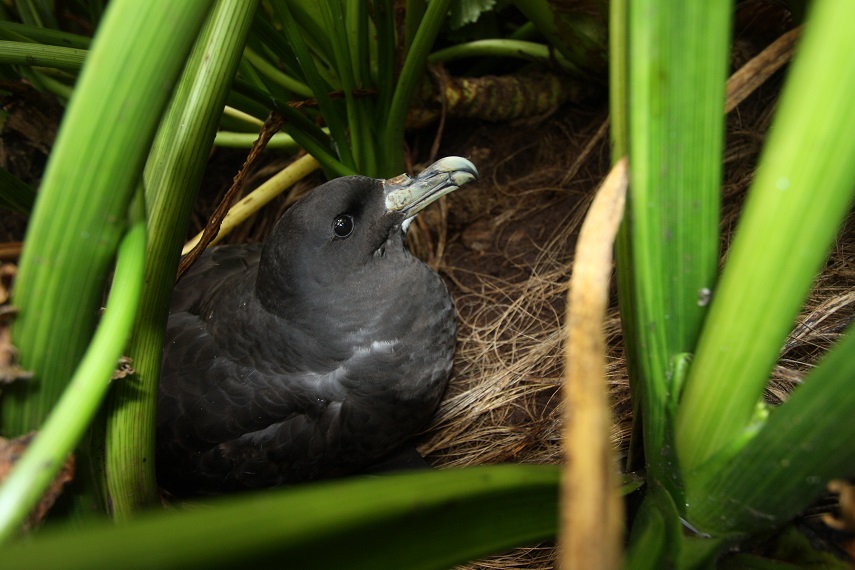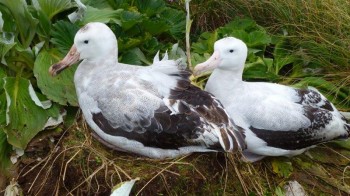
White-capped Albatross by ABUN wildlife artist Shary Page Weckwerth from a photograph by Laurie Smaglick Johnson
Alan Tennyson (Museum of New Zealand Te Papa Tongarewa, Wellington, New Zealand) has published in the journal Notornis on variation in bill colour in the White-capped Albatross Thalassarche steadi.
The paper’s abstract follows:
"The white-capped mollymawk (Thalassarche cauta steadi) and Tasmanian mollymawk (T. cauta cauta) have discreet breeding sites, but away from their breeding grounds, where their at-sea ranges overlap, they are difficult to identify. The bill colour of these taxa has recently been considered to differ, but there is much conflicting information in published accounts. Three key differences often discussed are the amount of yellow on the culminicorn, the amount of yellow on the cutting edge to the upper mandible, and the amount of darkness on the mandibular unguis. In January 2018 I assessed these characters in 100 adult white-capped mollymawks at their Disappointment Island breeding site and found that each character was variably present. The majority of white-capped mollymawks lacked a yellow base to their culminicorn and had a dark mark on their mandibular unguis. In contrast, it has been reported that the majority of adult Tasmanian mollymawks have yellow at the base of their culminicorn and lack a dark mark on their mandibular unguis. While these characters can be used as a guide to identify these taxa, a minority of individuals of each taxon show the ‘typical’ bill colours of the other taxon. The amount of yellow on the cutting edge to the upper mandible varied between individual white-capped mollymawks, and so this is not a useful identification character."
This publication forms part of a compilation of 19 papers appearing in a special issue of the journal Notornis of Birds New Zealand that covers many aspects of the avifauna of the Auckland Islands. The special issue is also being made available as a 436-page book with the title Lost Gold: Ornithology of the subantarctic Auckland Islands. Edited by Colin Miskelly and Craig Symes, it can be ordered for purchase (click here). An interview with the two editors gives information about their work with the book. Click here to access abstracts for all 19 papers.
Reference:
Tennyson, A.J.D. 2020. Variation in the bill colour of the white-capped mollymawk (Thalassarche cauta steadi). Notornis 67: 333-340.
John Cooper, ACAP Information Officer, 11 April 2020

 English
English  Français
Français  Español
Español 





